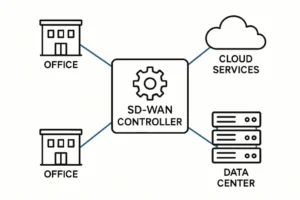In the present era, companies handle a large number of documents daily. These may include invoices, bills, reports, forms, ID cards, or contracts. Manual handling is time-consuming and exhausting. This is why companies are increasingly resorting to technology. One such useful resource is the Document OCR API. In addition to this, applications such as AI document classification make it even easier.
If you are an automation architect, your task is to build systems that save time, minimise errors, and lower costs. Your selection of the right Document OCR API can make a huge difference for your business. But how do you identify which one is the best? Fear not. In this guide, we will tell you everything in very simple language so that even a 10th-grade student can follow it.
What is OCR?
OCR denotes Optical Character Recognition. It is a technology that captures text from pictures or documents that are scanned.
For instance:
- In the case where a picture of a printed invoice is made, OCR takes the text out of it such as name, address, date, and amount.
- If an old book was scanned, OCR could make it digital text that is editable on a computer.
Or simply, OCR is like a digital eye. It sees printed or handwritten text and converts it into editable, computer-friendly data.
So, what is the Document OCR API?
An API (Application Programming Interface) is a connection that allows communication between two software programs.
Consequently, a Document OCR API is a service that enables your app or system to access the OCR function without having to build it on your own. The API just needs to get the image of the document or plain text, and it will return the text to you.
Why will this be helpful? Because:
- You don’t have to recruit a large tech staff to create OCR.
- You can integrate it into your system and go immediately.
- It can work with most kinds of documents, even dirty ones.
What is AI Document Classification?
After OCR reads out the text, you then want to know what type of document it is. That’s when AI document classification comes in.
It classifies documents into categories using artificial intelligence. For instance:
- It can identify a document whether it is an invoice, a medical report, or ID proof.
- It can also identify important fields within the document, such as invoice number, total, or date.
- It can be regarded as an intelligent assistant that reads the paper and also knows about the type of paper and where the key points are located.
Why Are These Tools Very Important?
Imagine a company receiving 10,000 invoices a month. If the checking and typing into the system for each one are done by humans, it will take weeks, and there will be errors.
Now, with Document OCR API and AI document classification:
- The system reads each invoice automatically.
- It sorts them into the right folders.
- It fills in the company’s accounting software.
This means:
- Less time spent.
- Fewer errors.
- Faster payments and happier customers.
Key Benefits of Document OCR API
- Saves Time – You won’t need to type everything manually.
- Reduces Errors – Machines won’t feel tired like humans.
- Cuts Costs – Less manpower required for data entry.
- Scales Easily – Can process thousands of documents at a time.
- Works with Many Formats – PDFs, pictures, scanned documents, etc.
Key Benefits of AI Document Classification
- Organizes Data Automatically – No sorting files manually required.
- Improves Search – Easy to locate the correct document in seconds.
- Understands Context – Recognizes a bill from a medical report.
- Learns Over Time – Smarter with more data.
- Supports Compliance – Organizes records for audit compliance.
Challenges in Selecting the Right OCR API
Not all Document OCR APIs are created equal. Some excel at speed, and others are more accurate. Here are some things automation architects should be aware of:
- Accuracy – Does it recognize handwriting well? Can it read blurred images?
- Languages – Does it recognize lots of languages or only English?
- Integration – Can it integrate with your current system easily?
- Speed – How quickly can it scan big files?
- Security – Is data secure? Does it comply with legal regulations?
- Cost – Is it cost-effective when used at scale?
Steps to Pick the Best Document OCR API
Step 1: Define Your Needs
Ask yourself:
- What kind of documents do we process?
- Do we require handwriting recognition?
- Do we require multi-language support?
Step 2: Test Accuracy
Test with your documents. Test whether the OCR API is able to read them correctly.
Step 3: Check AI Document Classification
Find out if it can categorize documents the way your business desires.
Step 4: Consider Integration
Is it easy for the API to be connected to your software instruments such as ERP, CRM, or accounting systems?
Step 5: Review
In case the vendor follows data privacy laws like GDPR or HIPAA, make sure their compliance is verified.
Step 6: Compare
Choose the one that represents a good balance between price and performance. It’s not always true that the cheapest is the best.
Real-Life Example
Imagine a hospital that receives 2,000 patient forms on a daily basis. In the past, each form had to be read by the staff, the data needed to be entered into a system and then the documents had to be filed. This was both slow and expensive.
After applying the Document OCR API and AI document classification:
- The OCR scans patient names, dates, and medical information.
- The AI categorises it as to whether it is a prescription, a lab report, or a billing form.
- The information is stored in the appropriate folder.
Result: Staff spend less time on paperwork and more time with patients.
Future of Document OCR and AI
Technology is getting better quickly. In the future years:
- OCR will read even messy handwriting.
- AI document classification will improve.
- Cloud-based APIs will become easier for small businesses to access.
- Automation architects will be able to create “zero-touch” document processing systems.
This will allow companies to save even more time and money, while employees can concentrate on creative work rather than typing.
Tips for Automation Architects
- Start Small – Run a pilot in one department before implementing it in the whole company.
- Instruct the AI – The AI becomes more precise the more information it receives from you.
- Integrate Human Supervision – For highly delicate operations, have human reviewers check the output.
- Calculate the Profit – Keep track of the time and money you have saved after implementing the tools.
Conclusion
Selecting the proper Document OCR API and employing AI document classification is similar to having a super-intelligent digital aide for your business. It looks at documents, organises them, and maintains everything in line.
For automation architects, this is an impressive means of creating systems that decrease manual labour, save money, and enhance precision.
The world is in motion. Businesses that employ these tools will remain in the lead, and the rest might lag. So, sit back and experiment, compare, and select the OCR API best suited for your requirements.
Also Read-Data Science Innovations Transforming the Fintech Landscape








